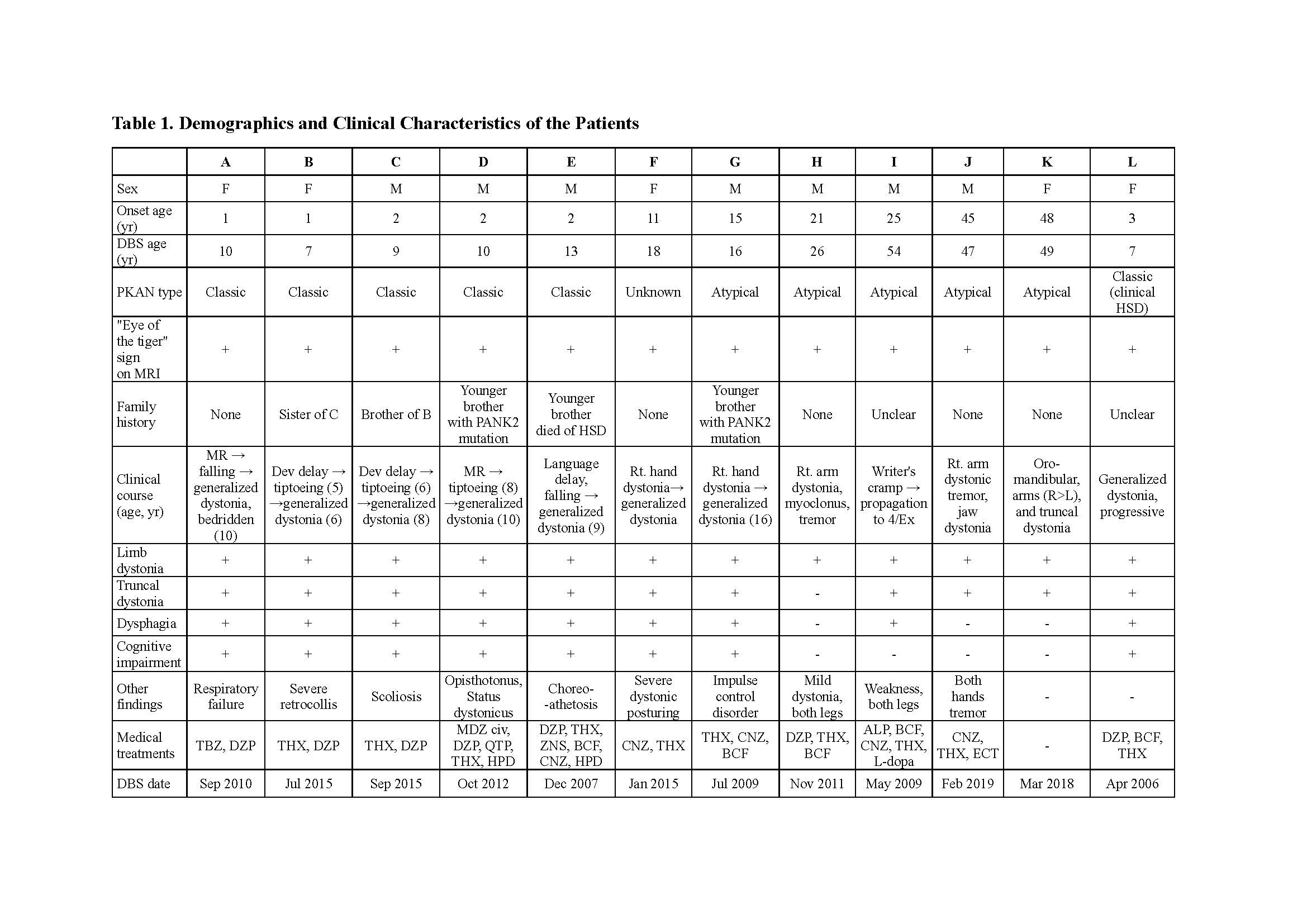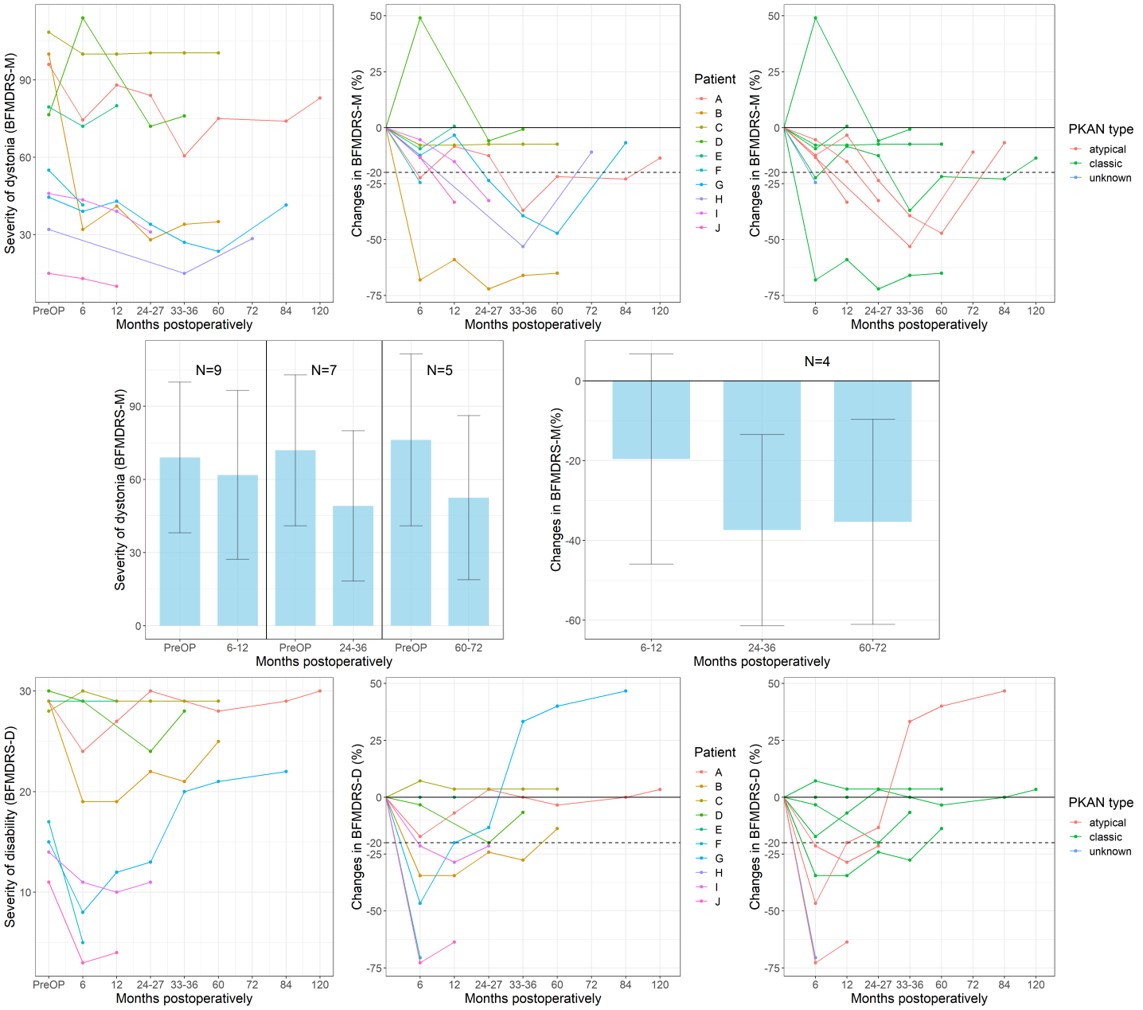Objective: To report the long-term clinical follow-up data of PKAN patients who underwent DBS implantation in three tertiary movement disorder centers.
Background: Pantothenate kinase-associated neurodegeneration (PKAN) is a rare autosomal recessive disorder, caused by mutation in the PANK2 gene. A meta-analysis of 99 PKAN cases reported improvement in dystonia rating scale 1 year after DBS implantation (Vloo et al., 2019). However, data on long-term prognosis after DBS in PKAN dystonia remains scarce.
Method: We reviewed the records of patients who received DBS implantation in three tertiary movement disorders centers, Seoul National University Hospital (SNUH), Asan Medical Center (AMC), and Samsung Medical Center (SMC), Republic of Korea. The inclusion criteria were: (i) patients with clinical diagnosis of NBIA confirmed with PKAN (ii) that underwent bilateral GPi-DBS implantation to treat moderate to severe medically intractable dystonia, (iii) the presence of preoperative BFMDRS-M scores, and (iv) the presence of information on postoperative clinical conditions ≥6 months after DBS implantation.
To observe the long-term prognosis trend after surgery, a descriptive analysis was performed on serial BFMDRS-M scores.
Results: A total of 12 patients were included in the final analysis, including 9 from SNUH, two from AMC (H and L), and one from SMC (K).
Pre- and postoperative BFMDRS-M were available for 10 patients, and BFMDRS-D for 9 except for patient H. The average BFMDRS follow-up period after GPi-DBS was 47.1 months (range, 6-120 months, SD 36.06).
Dystonia severity, as assessed by the BFMDRS-M, in the (i) postoperative 6-12 months was available in 9 patients, (ii) 24-36 months in 7 patients, and (iii) 60-72 months in 5 patients. The mean pre- and postoperative BFMDRS-M are shown in Figure 1D. The percentages of patients that showed more than 20% improvement in BFMDRS-M compared to baseline were 33.3% in 6-12 months, 71.42% in 24-36 months, and 60% in 60-72 months. BFMDRS-M in all three time points was available in 4 patients, and the mean improvement of dystonia severity in these patients was 19.63% (SD 26.3), 37.42% (SD 23.97), and 35.36 (SD 25.72) in the serial order.
Conclusion: Our observation provides a preliminary evidence for the long-term effect of GPi-DBS on PKAN, although the outcomes should be interpreted with caution due to possible selected survival bias.
To cite this abstract in AMA style:
KA. Woo, HJ. Kim, SJ. Chung, J. Youn, JH. Ahn. Long-term clinical outcome of deep brain stimulation in pantothenate kinase-associated neurodegeneration: a retrospective observational study [abstract]. Mov Disord. 2021; 36 (suppl 1). https://www.mdsabstracts.org/abstract/long-term-clinical-outcome-of-deep-brain-stimulation-in-pantothenate-kinase-associated-neurodegeneration-a-retrospective-observational-study/. Accessed April 22, 2025.« Back to MDS Virtual Congress 2021
MDS Abstracts - https://www.mdsabstracts.org/abstract/long-term-clinical-outcome-of-deep-brain-stimulation-in-pantothenate-kinase-associated-neurodegeneration-a-retrospective-observational-study/


